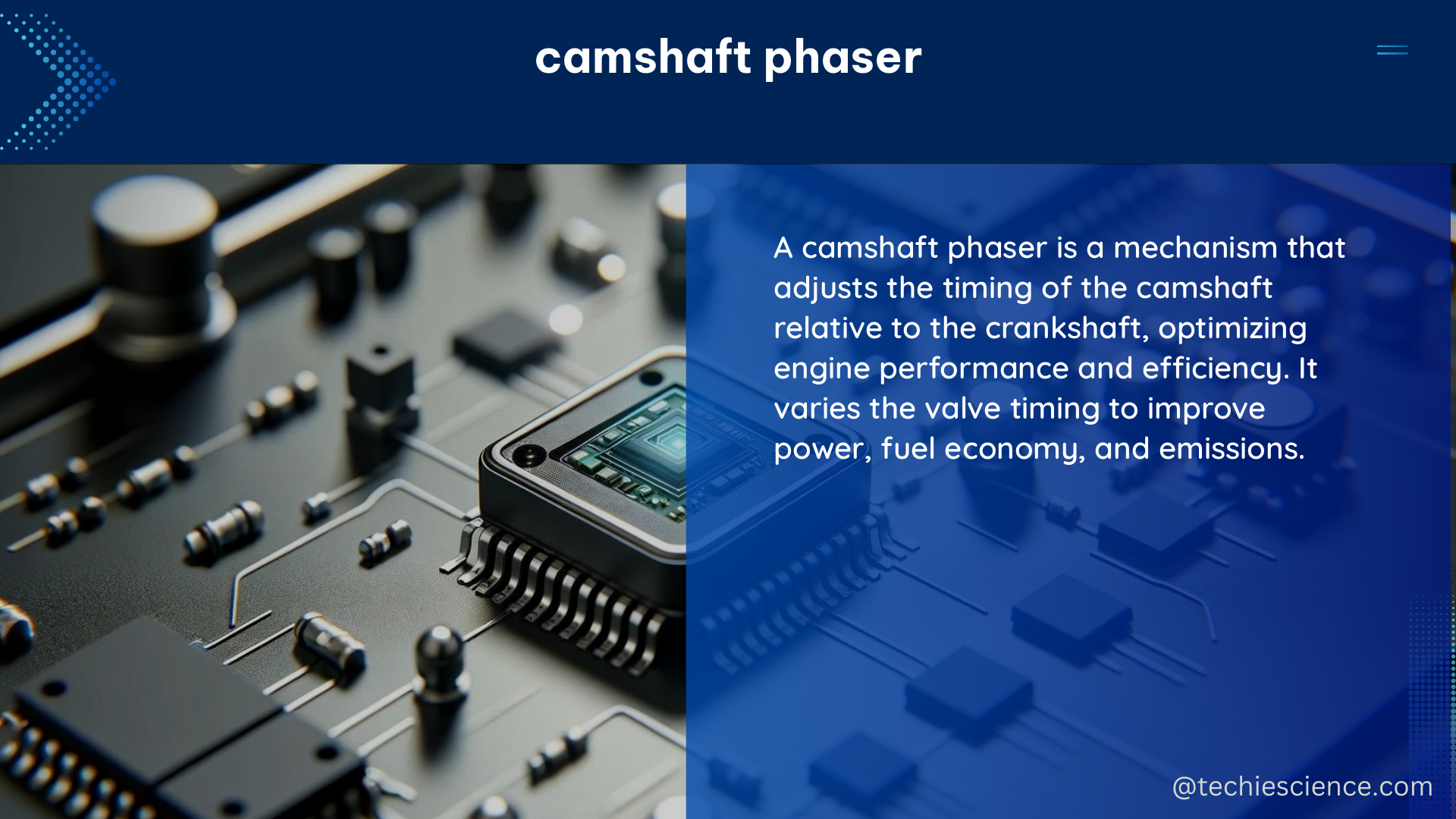Camshaft phasers are a critical component in modern engines, responsible for precisely adjusting the camshaft’s position to optimize engine performance, fuel efficiency, and emissions. This comprehensive guide delves into the technical details and measurable data points that technicians and DIY enthusiasts need to understand and diagnose issues related to camshaft phasers.
Camshaft Adaptation and Timing Chain Stretch
One of the key measurements for diagnosing issues related to timing chain stretch is the cam phaser adaptation intake bank 1, phase position. This data point can be accessed using a scan tool and provides valuable insights into the condition of the timing chain.
- Timing Chain Stretch Measurement: According to a forum post on Audizine, the cam phaser adaptation intake bank 1, phase position is a critical measurement for determining if the timing chain needs replacement. This value should be within the manufacturer’s specified range, typically between -10 and +10 degrees.
- Interpreting the Data: If the cam phaser adaptation value is outside the normal range, it could indicate that the timing chain has stretched, causing the camshaft to be out of sync with the crankshaft. This data can help technicians make an informed decision on whether to replace the timing chain or investigate further issues with the cam phaser.
Differentiating Cam Phaser and Base Timing Issues

Distinguishing between cam phaser and base timing issues can be a challenge, but a diagnostic expert on Diagnostic Network provides a valuable approach.
| Diagnostic Technique | Description |
|---|---|
| Scan Tool Monitoring | Use a scan tool to monitor the camshaft position sensor and crankshaft position sensor data while the engine is running. Compare the readings to the manufacturer’s specifications. |
| Sensor Data Correlation | If there is a difference between the camshaft and crankshaft position sensor readings, it could indicate a problem with the cam phaser or base timing. |
| Manufacturer Specifications | Refer to the manufacturer’s guidelines to determine the expected correlation between the camshaft and crankshaft position sensor data. Any discrepancies could point to a specific issue. |
Analyzing VVT Timing Data
Variable Valve Timing (VVT) data can provide valuable insights into potential issues with camshaft phasers. Alldata has released information on using VVT timing data to diagnose VVT-related codes.
- VVT Timing Tracking: Monitor the VVT timing (actual and desired) or the amount of cam timing error data PIDs using a scan tool. This can help determine if the cam timing is normal at startup and then starts to rise as the engine is running, indicating a solenoid spool issue.
- Solenoid Spool Issue Identification: If the VVT timing data shows a discrepancy between the actual and desired cam timing, it could suggest a problem with the VVT solenoid spool, which is responsible for controlling the cam phaser’s movement.
Diagnosing Camshaft Position Issues
Intermittent camshaft position issues can be challenging to diagnose, as evidenced by a post on the Dodge Dart Forum.
- Desired vs. Actual Camshaft Position: The post mentions that the exhaust camshaft had a desired position of 118 degrees, but without any duty cycle on the solenoid, the actual position of the camshaft was at 60 degrees. This discrepancy indicates a problem with the camshaft phaser or related components.
- Engine Hunting Idle: The engine in the Dodge Dart had a hunting idle when the pedal was released, further suggesting an issue with the camshaft position.
Troubleshooting P022 Code: Cam Phasers or Solenoid?
A Ford F150 Forum post discusses the challenge of determining whether a P022 code is related to the cam phasers or the solenoid. This highlights the importance of having a definitive answer to ensure the correct repair is performed.
- P022 Code Diagnosis: The post emphasizes the difficulty in pinpointing the root cause of a P022 code, as it could be related to either the cam phasers or the solenoid.
- Importance of Accurate Diagnosis: Correctly identifying the faulty component is crucial to ensure the proper repair is carried out, avoiding unnecessary time and cost.
In conclusion, this comprehensive guide provides a wealth of technical details and measurable data points related to camshaft phasers. By understanding the critical measurements, diagnostic techniques, and common issues, technicians and DIY enthusiasts can effectively diagnose and repair problems related to this crucial engine component, ensuring optimal engine performance and efficiency.
References:
– Audizine Forum Post on Timing Chain Stretch Measurement
– Diagnostic Network Post on Cam Phaser vs. Base Timing Issues
– Dodge Dart Forum Post on Camshaft Position Issues
– Ford F150 Forum Post on P022 Code and Cam Phasers or Solenoid
– JustAnswer Post on Timing Chain Change and Cam Phaser

The lambdageeks.com Core SME Team is a group of experienced subject matter experts from diverse scientific and technical fields including Physics, Chemistry, Technology,Electronics & Electrical Engineering, Automotive, Mechanical Engineering. Our team collaborates to create high-quality, well-researched articles on a wide range of science and technology topics for the lambdageeks.com website.
All Our Senior SME are having more than 7 Years of experience in the respective fields . They are either Working Industry Professionals or assocaited With different Universities. Refer Our Authors Page to get to know About our Core SMEs.